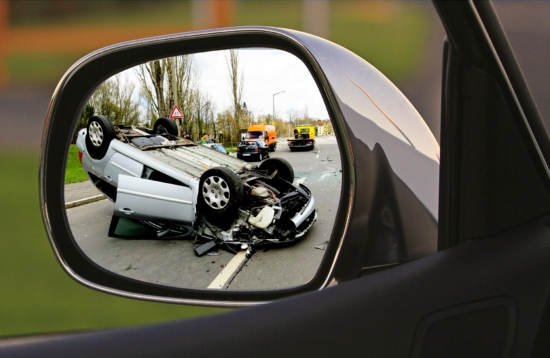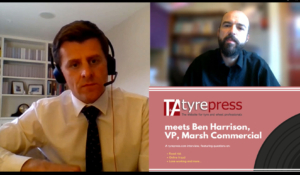Insurance, risk and the tyre industry: Tyrepress talks to Ben Harrison, vice president, Marsh Commercial
 Tyre fitters are most likely to help at the scene of a breakdown. However, Ben Harrison, vice president, Marsh Commercial explained that road risk is one of the two main areas for tyre businesses to consider. (Photo: Alexas Photos; Pixabay)
Tyre fitters are most likely to help at the scene of a breakdown. However, Ben Harrison, vice president, Marsh Commercial explained that road risk is one of the two main areas for tyre businesses to consider. (Photo: Alexas Photos; Pixabay)
The majority of industries across the UK have been impacted by the effect of COVID-19 and – with up to 60 per cent of garages closed during lockdown – the tyre industry is no exception. Prevailing market conditions combined with the complexity of the pandemic’s damage means that insurers have reduced their risk exposure and overall capacity. This, combined with newer pressures on the horizon, has provided tyre companies with a rationale for bolstering their risk management measures in order to avoid costly and time-consuming slip-ups down the line. Tyres & Accessories spoke with Ben Harrison, vice president, Marsh Commercial in order to find out more.
Speak to the experts and they explain that, whilst health and safety controls should already be at the core of effective risk management in the tyre industry, recent data points to a surge in the number of roadside injuries for tyre fitters. For example, according to the Health and Safety Executive (HSE), there have been over 7,000 injuries and 33 deaths in the motor vehicle repair industry over the last five years. As it is a legal requirement to have Employers Liability cover, tyre companies have much to lose by way of injured employees and claims costs. The primary antidote to minimising these is to ensure that employees are getting sufficient training and performance feedback on a regular basis.
The burgeoning of developments in technology has reinvented the motor industry with the dawn of electric and hybrid vehicles, which are becoming increasingly popular. But with electric vehicle technology comes increased reliance on batteries and – as a consequence – increased complexity and risk. Indeed, talking to T&A as part of our Tyrepress meets series of online videos Harrison said: “We are going to see [increased risk]…particularly as the technology gathers pace and there’s less understanding, particularly in the interim period. I imagine that as electric vehicles become more common we will develop risk strategies around that, but at the moment its difficult because…they are the exception rather than the rule.”
In other words, although an increased uptake of these vehicles is a positive move for the environment, the risks of fire-related incidents and cyber-attacks are heightened. It is important therefore for companies in this field to deploy a comprehensive array of active and passive measures such as widespread sprinkler systems, fire-resistant surfaces and emergency procedures for staff – the experts advise. On the data security side, business owners should be reviewing all cloud-based programs as well as their crisis response plans in order to minimise disruption to operations in the event of an attack.
On the theme of technological advancements, one method that has been in the spotlight for its ability to reduce accidents by up to 60 per cent is the use of telematics. These systems are able to track vehicle movement and capture incident management data such as detecting drivers who are at risk of collision and require further training as a result. They can also gather and deliver information on how the vehicle has been driven, such as speed, location, and distance travelled. To allow for more accurate reporting and assessment, some systems are now able to gather real-time data through an interactive interface.
Top two risk areas for tyre businesses
Asked what are the most pressing needs for insurance in the tyre sector today, Harrison pointed to road risk and employer liability: “The two main areas are: road risks – the vans that are out on the road and have to travel a lot of miles in short space of time (be it a wholesaler getting tyres to a retail depot or whether they are a breakdown business getting out to a haulier who’s stranded on the side of the road with a burst tyre)…this is where we get the higher frequency of claims”.
But the highest severity is with regard to employer liability “for a serious injury to a member of the wage roll or maybe a serious fire claim to maybe a warehouse.” Continuing with the subject of fire risk, T&A asked if this was as much of a problem as in recycling, for example: “The inception hazard isn’t as high in tyre wholesale” because fire claims from the recycling side tend to be relating to the spark risks of chipping against tyre cords in dry and old-tyre heavy environments. However, “the severity is there. Maybe a fork-lift truck has been left to charge overnight and there’s a burnout…The inception hazard is different than it is in wholesale”, Harrison explained.

Tyres & Accessories spoke with Ben Harrison (left) as part of our ongoing series of video interviews, which are available to subscribers online at tyrepress.com (Photo: Tyre Industry Publications Ltd)
In addition to the more tangible risk management provisions, tyre companies benefit undeniably from a safety-first culture amongst employees. Not only does this positively affect the behaviour and attitudes of fleet drivers but ultimately serves to protect the financial health of the company. When drivers are aware of telematics systems being fitted to their vehicle for example, they are more likely to display situational awareness around reckless driving, and when a regular schedule of safety training is implemented, a signal is sent to employees that the company considers health and safety to be paramount to their wellbeing and overall commercial success.
The overriding message is that, with a changing risk profile and an evolving insurance market, tyre companies need to consider the robustness of not only their risk management strategies, but also the wider trends and developments in the sector. This includes staying abreast of the latest best practices and standards such as the NTDA initiated Roadside Emergency Action Concerning Technicians (REACT) scheme, which records and monitors the training of UK technicians working at the roadside to ensure they can do their job safely without causing risk of injury to themselves or others. Injuries are never completely out of the realm of possibility so claims experience and defensibility is are said to be key.
The sharpened focus on environmental protection should sway tyre companies to consider the quality of their tyres and the process around safe disposal. Interestingly for all sections of the tyre industry, Marsh Commercial also highlighted that “pollution from tyre wear can be 1,000 times worse than what comes out of a car’s exhaust. These non-exhaust emissions are a growing concern for air quality and can be reduced by higher inflating better quality tyres to the recommended Pollutant Standards Index level.” Research on this subject continues, with some of the most recent papers now freely accessible online. With regards to disposal, Marsh Commercial suggests responsible tyre recycling is possible through recognised professional tyre collectors and re-processors.
But in any case, it remains wise advice to consider your insurance options early: “We are starting the renewal process now probably four months out in terms of building a strategy with that client, in terms of getting the right information and reaching down into their insurance team. So, not just talking to the financial director and getting a list of what’s insured. It’s really meeting with the health and safety manager, meeting with the transport manager, engaging with ops – all those key stakeholders to really get the risk profile right before it goes out. That can often take a minimum of three months. So, certainly start the process four months out.
And there are also ways to reduce risk and therefore cost: “Also, look to consider ways you can improve your risk from month one, before you get to four months out. If you are eight or nine months from renewal, think about what training you have been doing. Have a look at your claims history…see if there are some quick wins to improving your claim experience. Address driver performance. Put cameras in the vehicles. Look at those now, don’t wait until your renewal date because it will be too late.”
To summarise, risk and insurance is a complex picture and the tyre industry certainly has its work cut out for it in terms of resilience building for ongoing prosperity. Marsh Commercial’s advice? By working with advisers however, tyre companies have opportunities to future-proof themselves and continue vital role in the UK economy.

 Tookapic; Pixabay
Tookapic; Pixabay Vredestein
Vredestein
Comments